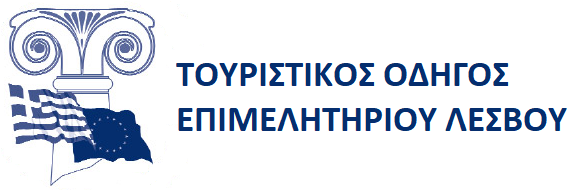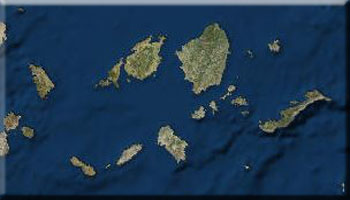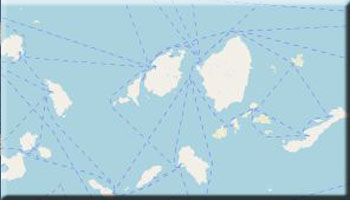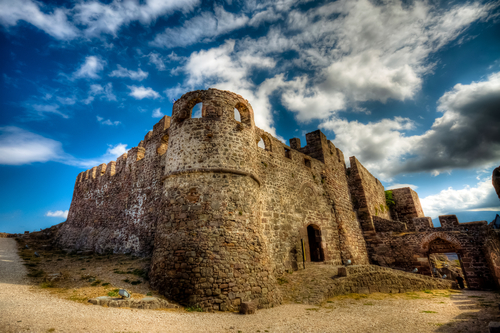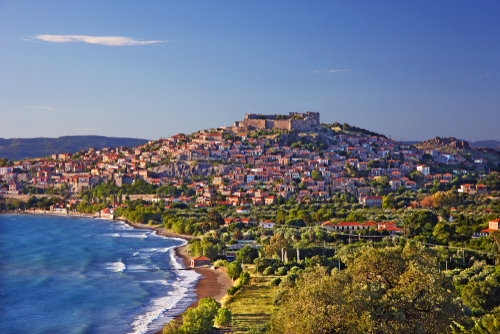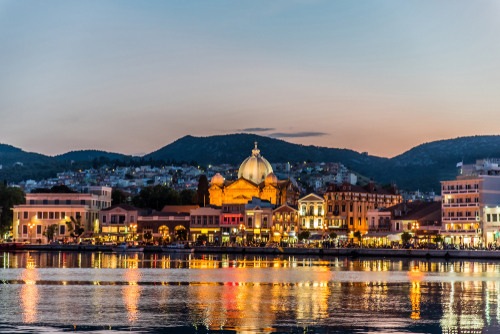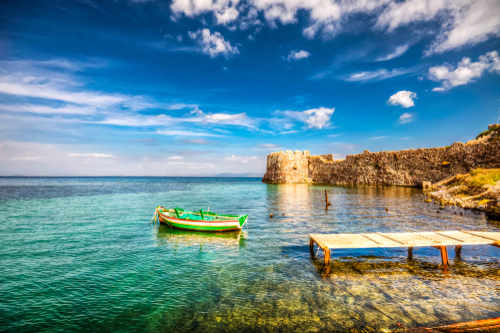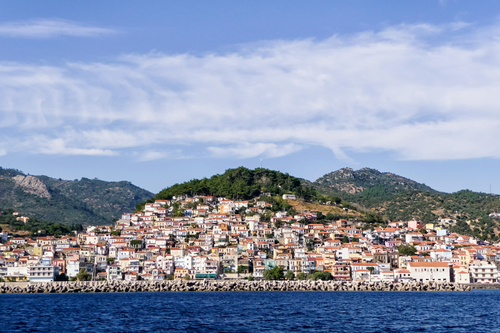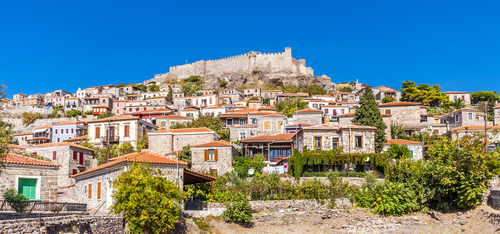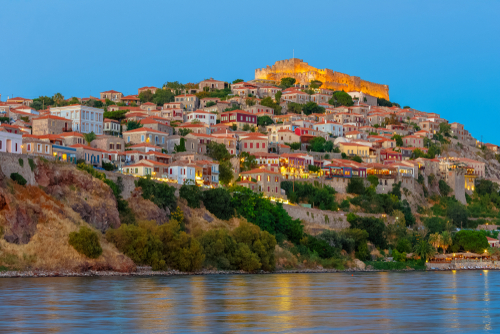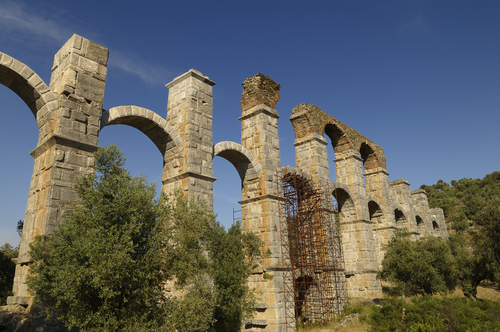AGIOS EFSTRATIOS - HISTORICAL OVERVIEW
The history of the island starts in the Mycenaean period and has culturally and historically followed the fortune of the islands of the Northern Aegean. Archaeological findings from the Poliochne era have been discovered. The island has had various names over time: ‘Nea’ during the prehistoric period, ‘Alonissos’ during the classical period, ‘Nissos ton Neon’ during the Byzantine era and ‘Agios Efstratios’ since the 15th century
Agios Efstratios became widely known through being associated with a rough chapter of Greek modern history, since it became a place of exile. This beautiful island served as the home of not only exiled politicians, but also leading intellectuals and artists, such as poets Yiannis Ritsos, Tassos Leivaditis and Titos Patrikios, authors Menelaos Loudemis, Tassos Vournas, actors Manos Katrakis, Tzavalas Karoussos, painters Christos Daglis, Giorgos Farsakidis and other political exiles.
The old hamlet of Agios Efstratios was situated above the port, on top of a hill, and was destroyed after the 1968 earthquake. Subsequently, the military dictatorship (junta) decided to have it demolished. Almost all houses were torn down, along with 8 of the island’s 11 churches. Many, such as the Church of the ‘Five Martyrs’, had been constructed with materials from ancient Greek temples and contained important icons of the 6th - 7th century AD.
Houses were made of stone and featured two or three stories with wooden supports and traditional architectural styles. The beautiful Porfyreios & Marasleios School building survived the earthquake and subsequent demolition. Porfyreios & Marasleios School was erected from 1906 to 1909 with funds of the community of Agiostratites in Egypt and donated by National Benefactor Grigoris Maraslis; it had housed the island’s grade school until then (1909-1968). Presently, following its renovation, it aspires to house the ‘Green Energy’ Academy within the framework of the implementation of the ‘Ai Stratis – Green Island’ Programme.
The renovated building of the ‘Old School’ houses the Museum of Democracy, featuring exhibits, photographs, authentic items, handwritten newspapers and video shows from the life of exiles on the island and other places of exile.
Remains of an ancient settlement have been found on the Agios Minas Hill and its chapel, along with the remains of a prehistoric settlement in Alonitsi location and the remains of an ancient necropolis in Evraiki (Jewish) location.
Also worthy of note are the Churches of Christ, St. Nicholas and St. Basil, the latter having been built in 1727. The island also features numerous chapels (45 before the earthquake) and 3 glebes of Mt. Athos monasteries.
On the NE side of the island, near Alonitsi beach, there is a cave in the rock where St. Efstratius hid when being persecuted by the iconoclasts (8th century AD). It is believed that the contemporary name of the island is due to him.
Source: North Aegean Region - https://www.pvaigaiou.gov.gr
